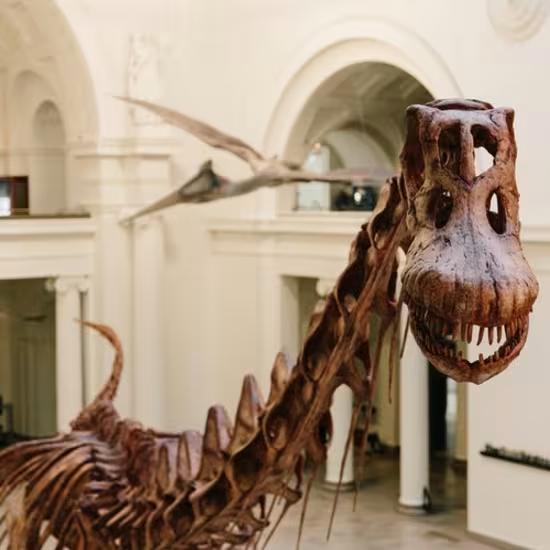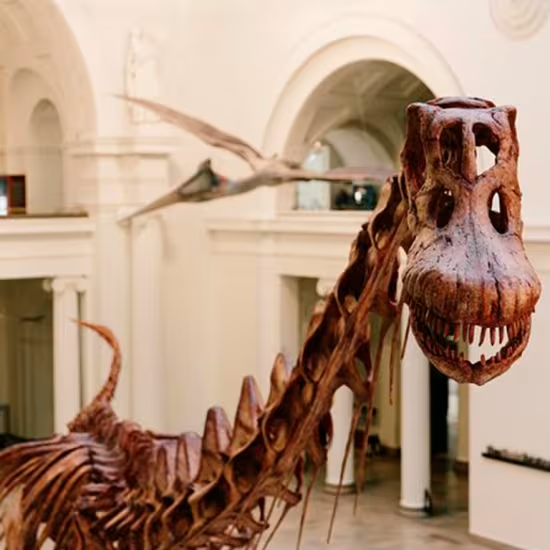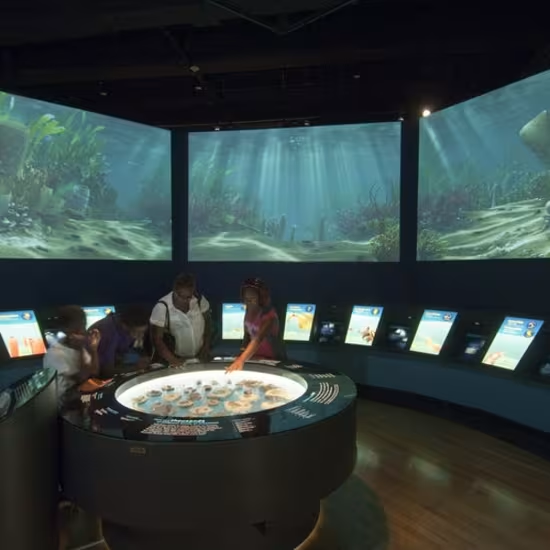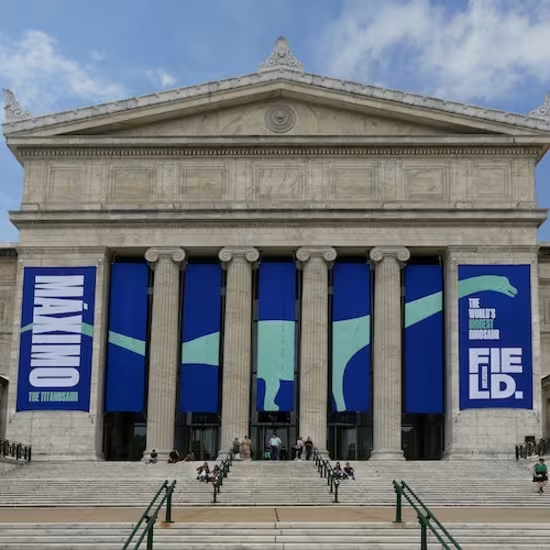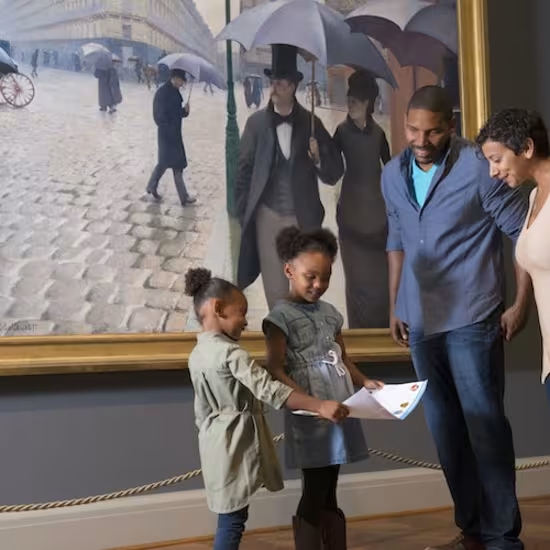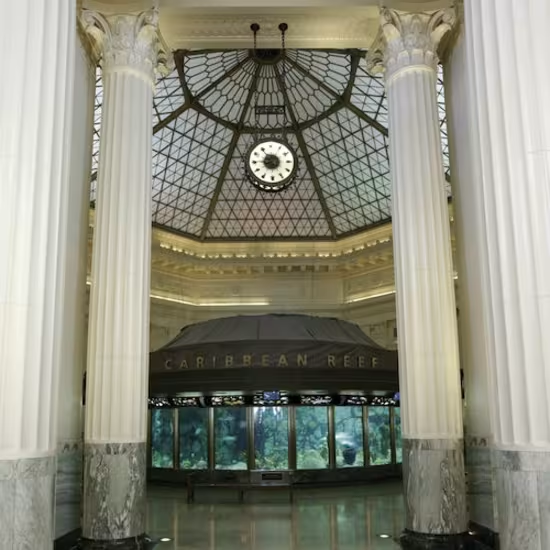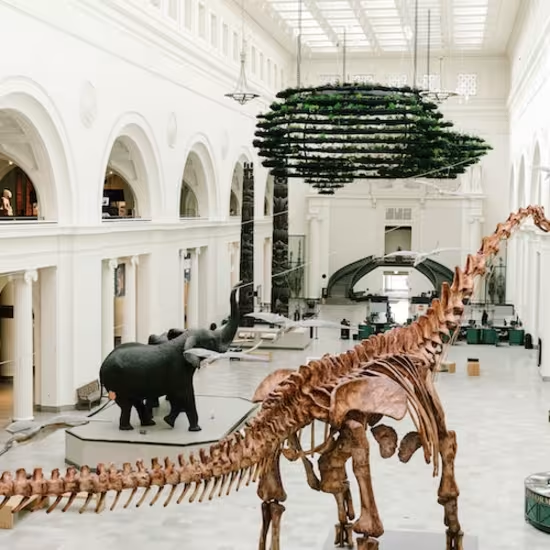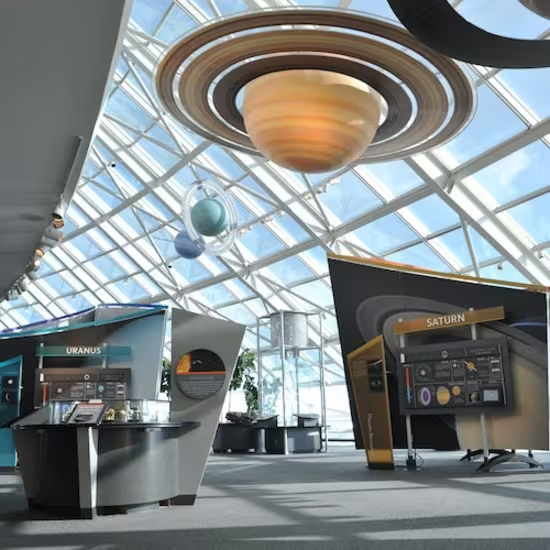
Plan Your Visit to Field Museum: Timings and Directions
Plan Your Visit to Field Museum: Timings and Directions
Discover the Field Museum, a cornerstone of natural history and human stories since 1894. Renowned for its extraordinary collections and inspiring exhibitions, the museum invites visitors to embark on a journey of discovery that celebrates resilience and curiosity across cultures and time. Explore this page for essential visitor information, including opening hours, directions, ticket options, and tips to make the most of your experience at one of the world’s premier natural history museums.
Field Museum General Information
General Opening Hours
The Field Museum welcomes visitors daily from 9:00 AM to 5:00 PM. All major exhibits and museum areas adhere to these hours, providing ample time to explore the collections and displays.
Last Admission
Guests are advised that the last entry to the museum is at 4:00 PM. This ensures visitors have sufficient time to experience the exhibitions before closing.
Closure Days
The museum is closed annually on Thanksgiving Day and Christmas Day. On all other days, including holidays and weekends, the museum remains open during regular hours unless otherwise noted.
Holiday and Special Event Hours
While typical hours apply throughout the year, certain special events or programs might have extended or adjusted hours. Visitors are encouraged to check the official Field Museum website or contact the venue directly for up-to-date information on any variations during holidays or for specific events.
Best Time to Visit The Field Museum
For a more relaxed visit to The Field Museum, plan your trip during quieter times. The museum is busiest mid-morning to early afternoon, so arriving when it opens at 9:00 AM or after 3:00 PM can help you avoid large crowds, especially at popular exhibits like SUE the T. rex and Evolving Planet.
Weekdays, especially Tuesday through Thursday, are less crowded than weekends or Mondays. If possible, visit outside major holidays like Thanksgiving and Christmas when the museum is closed. Avoiding special event days also helps minimize wait times.
To avoid crowds, visit The Field Museum during weekdays, especially Tuesday through Thursday, and consider arriving right when it opens at 9:00 AM or after 3:00 PM. Late fall and winter, excluding holidays, are also quieter times to visit. To save time, purchase tickets online in advance and book special programs or guided tours ahead to ensure availability. This way, you can enjoy the exhibits with fewer crowds and more space to explore.
Field Museum: 3 Tips to Beat the Crowds
Purchase Tickets in Advance
Secure your entry by buying tickets online before your visit. This helps you skip the ticket lines upon arrival, ensuring a smoother and quicker access to the museum’s exhibits.
Arrive Early or Late
Plan your visit for the museum’s opening hour at 9:00 AM or during the last admission period around 4:00 PM. These times typically see fewer visitors, giving you a more relaxed experience exploring the museum.
Visit on Less Popular Days
Choose weekdays, especially mid-week, to avoid weekend and holiday crowds. Tuesdays through Thursdays usually have lighter attendance, allowing for a more enjoyable and peaceful tour of the museum.
Location of The Field Museum
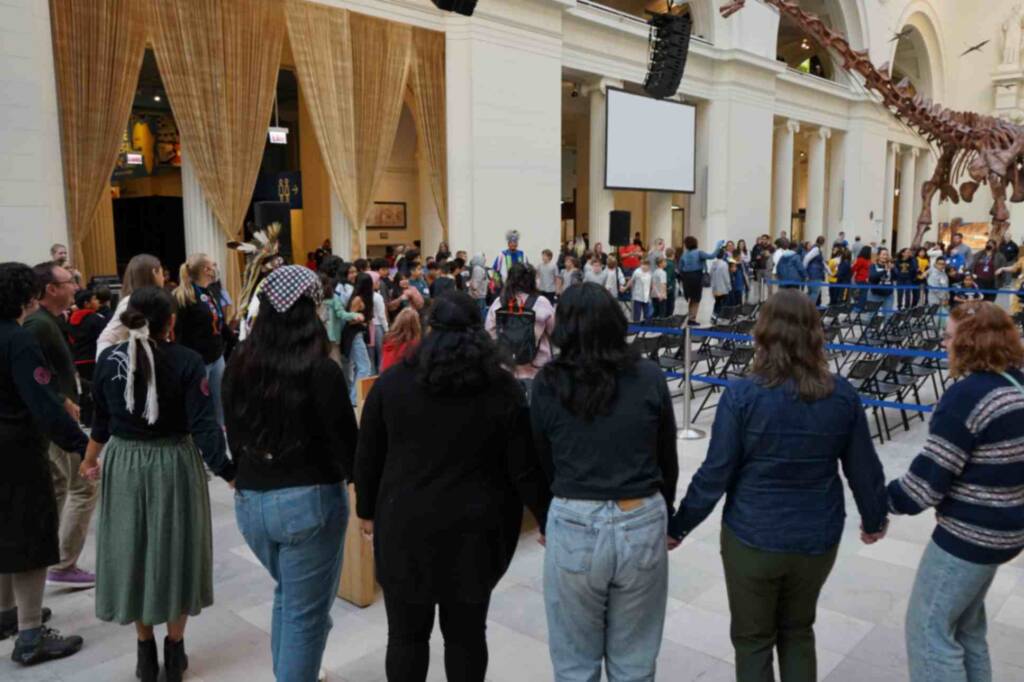
The Field Museum of Natural History is located at 1400 S. Jean Baptiste Pointe DuSable Lake Shore Drive, Chicago, IL 60605. Nestled in Chicago’s vibrant South Loop neighborhood, the museum sits prominently on the Museum Campus, an area renowned for its cultural and educational institutions. This prime lakeside location offers visitors stunning views of Lake Michigan and easy access to several other iconic attractions.
Adjacent to The Field Museum, guests can conveniently explore the Shedd Aquarium and the Adler Planetarium, both within walking distance, allowing for a full day immersed in natural and scientific wonders. The surrounding Museum Campus is a green, scenic space ideal for leisurely strolls, featuring walking paths along the water and panoramic views of the Chicago skyline.
Whether arriving by public transit or car, The Field Museum’s central location makes it a convenient stop for international tourists seeking to experience Chicago’s rich museum and cultural scene. Visitors planning their trip can click “Get Directions” to find detailed routes and transportation options to the museum.
Getting to the Field Museum

By Subway
The Field Museum is easily accessible via Chicago’s efficient subway system, making it a convenient option for visitors traveling from various parts of the city. For example, from downtown Chicago’s central Loop area, the subway ride to the museum generally takes about 15 to 20 minutes.
- The closest subway station to the Field Museum is the Roosevelt station, which is served by the Red, Orange, and Green Lines of the Chicago Transit Authority (CTA). From the Roosevelt station, it is a brief walk—approximately 10 minutes—south to the museum’s entrance. This short distance makes the subway a practical way to avoid traffic and parking challenges near the Museum Campus.
- Using the subway to reach the Field Museum offers frequent service throughout the day, with trains running every few minutes, providing flexibility for visitors to plan their trips at convenient times. The direct connection via the Roosevelt stop simplifies the route, eliminating the need for additional transfers and ensuring an efficient journey to one of Chicago’s premier cultural attractions.

By Train
For visitors traveling to the Field Museum from areas such as New Jersey or other parts of the greater Chicago region, taking the train offers a convenient and direct route to the museum. The nearest train station to the Field Museum is the Museum Campus/11th Street station, serviced by Metra Electric District and the South Shore Line.
- Travel time from downtown Chicago to this station typically ranges from 10 to 15 minutes, providing quick access to the museum from central locations. For those coming from further afield, such as suburban or neighboring states, these train lines offer an accessible connection to Chicago’s Museum Campus, where the Field Museum, Shedd Aquarium, and Adler Planetarium are all located close together.
- Travelers crossing regional boundaries should note that these rail services operate over well-maintained routes, including crossings over Chicago’s waterways, ensuring a smooth journey. Upon arrival at Museum Campus/11th Street station, the Field Museum is a short walk, making the train an efficient and stress-free option for reaching this renowned natural history institution.

By Bus
Visiting the Field Museum by bus offers a convenient and accessible travel option, especially for those arriving from Chicago’s downtown area. From a central location such as Millennium Park, the trip typically takes around 20 to 30 minutes, though travel times may vary depending on traffic conditions.
- The most convenient bus stops near the Field Museum are located along South Lake Shore Drive and South Museum Campus Drive. Key bus routes serving the museum include the #146 Inner Drive/Michigan Express and the #130 Museum Campus buses, which provide direct access to Chicago’s Museum Campus where the Field Museum is situated.
- Choosing to travel by bus not only helps avoid the hassle of parking downtown but also offers scenic views of Lake Michigan and the city skyline along the route. Buses in Chicago are equipped with comfortable seating and modern amenities, making the journey to the Field Museum both pleasant and cost-effective. Whether you are a solo traveler or part of a group, taking the bus is an environmentally friendly and practical choice for reaching this iconic natural history museum.

By Taxi
Visitors arriving at the Field Museum by taxi or ride-sharing services can expect a convenient and comfortable journey, ideal for those seeking privacy and a direct route to the museum. From downtown Chicago’s Loop area, the typical travel time ranges from 10 to 20 minutes, depending on traffic conditions. Travel durations may vary during rush hours or special events, so planning ahead is advisable.
- The recommended drop-off point for taxis and ride-shares is at the museum’s main entrance located at 1400 S. Jean Baptiste Pointe DuSable Lake Shore Drive, Chicago, IL 60605. This entrance provides easy access to the grand halls and ticketing areas, allowing visitors to start their museum experience seamlessly.
- Choosing a taxi or ride-share offers a hassle-free alternative to public transit, providing door-to-door service, comfort, and the flexibility to travel on your own schedule. This option is especially convenient for visitors carrying luggage, traveling with family, or those who prefer a private ride directly to the museum.

Parking Facilities Near The Field Museum
Visitors to The Field Museum have several parking options available nearby to accommodate their needs. Below is an overview of convenient parking locations with pricing and distance details to help you plan your visit efficiently:
- 1. **Museum Campus Parking Lot**
- *Location:* 1400 S. Lake Shore Drive, Chicago, IL 60605
- *Pricing:* Starting at approximately $25 for up to 6 hours (rates may vary with events)
- *Distance to The Field Museum:* About a 5-minute walk (approximately 0.2 miles)
- 2. **McCormick Place Parking Garage**
- *Location:* 2301 S. Indiana Avenue, Chicago, IL 60616
- *Pricing:* Rates begin around $12 per hour, with daily maximums available
- *Distance to The Field Museum:* Approximately a 15-minute walk (about 0.7 miles)
- 3. **Grant Park South Garage**
- *Location:* 45 E. Ida B. Wells Drive, Chicago, IL 60605
- *Pricing:* Typically $20 for daily parking; hourly rates vary
- *Distance to The Field Museum:* Approximately a 12-minute walk (0.6 miles)
- 4. **Surface Street Parking (Metered)**
- *Area:* Along surrounding streets near Museum Campus, including S. Lake Shore Drive and Museum Campus Drive
- *Pricing:* Metered street parking with rates generally $3 to $6 per hour in this area
- *Distance to The Field Museum:* Varies; meters are often within a 5-10 minute walk
- 5. **Off-Site Private Parking Lots**
- *Locations:* Numerous private lots are available within a 10-minute walk radius, such as near Downtown Chicago and South Loop neighborhoods
- *Pricing:* Starts around $15 for several hours, with some lots offering discounts for museum visitors or group events
- *Distance to The Field Museum:* Usually between 5 to 15 minutes on foot
- **Additional Notes:**
- – Motorcoach parking is arranged off-site and should be coordinated in advance, especially for group visits or special events.
- – Discounted parking rates may be available for museum guests attending special programs or group bookings—please check with the museum ahead of your visit.
- – Visitors are advised to review current parking availability, prices, and any event-related adjustments by consulting official online resources before arrival.
- This selection of parking options ensures easy access to The Field Museum, allowing you to focus on exploring its world-renowned exhibits.
Prepare your visit to the Field Museum
- Facilities
- Family Visits
- Onsite Rules
- Things to Do Nearby
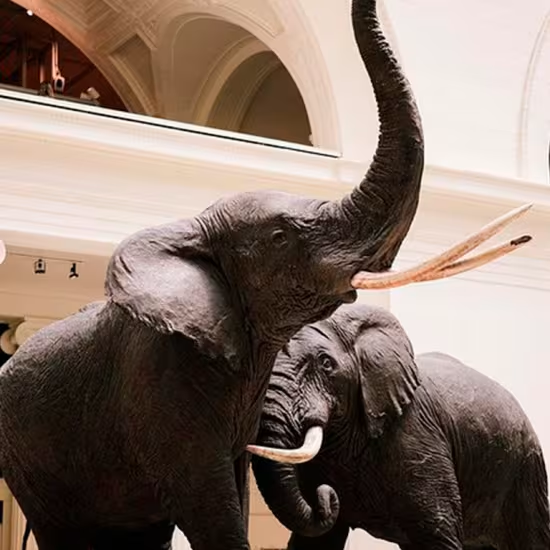
• Visitor information desk is conveniently located near the main entrance to provide assistance and answer questions throughout your visit.
• Audio guides and interactive multimedia tools are available to enhance your experience, offering detailed insights into exhibitions and specimens.
• Restrooms are accessible throughout the museum, clearly marked for visitor convenience and equipped to meet accessibility standards.
• Coat check services are offered to securely store personal belongings while you explore the galleries.
• Multiple gift shops onsite feature a wide selection of souvenirs, books, and themed merchandise reflecting the museum’s collections.
• Complimentary Wi-Fi is available throughout public areas of the museum, allowing guests to stay connected during their visit.

To enrich the educational experience for families, the museum provides special programs like PlayLab PlayDates and Meet a Scientist sessions, allowing children to engage with natural history topics in a fun and interactive setting while interacting with museum experts and educators.
Children can also benefit from audio guides and kid-focused materials available at the museum, crafted to suit various age ranges and designed to support independent exploration and learning, though specific age recommendations can be obtained directly from museum information desk or website.
Families with young children will find the museum navigable and stroller-friendly, with accessible pathways throughout the galleries ensuring ease of movement; while the museum does not explicitly state stroller policies, the facility’s layout supports family visits with convenient amenities to accommodate visitors with small children.
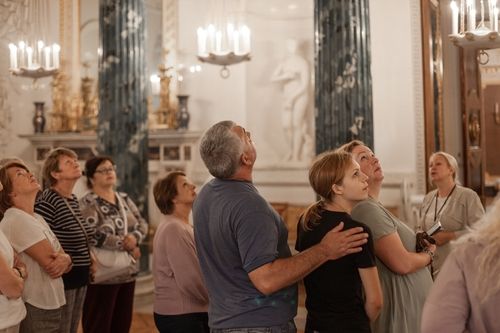
Photography is generally permitted; however, flash photography is strictly prohibited to protect delicate artifacts and specimens from potential damage.
To preserve the cleanliness and integrity of exhibits, consumption of food and beverages is not allowed inside the museum galleries.
All visitors and their belongings are subject to security screening upon entry to ensure a safe environment for everyone.
Only service animals are permitted within the museum; pets and other animals are not allowed to accompany guests inside the facility.
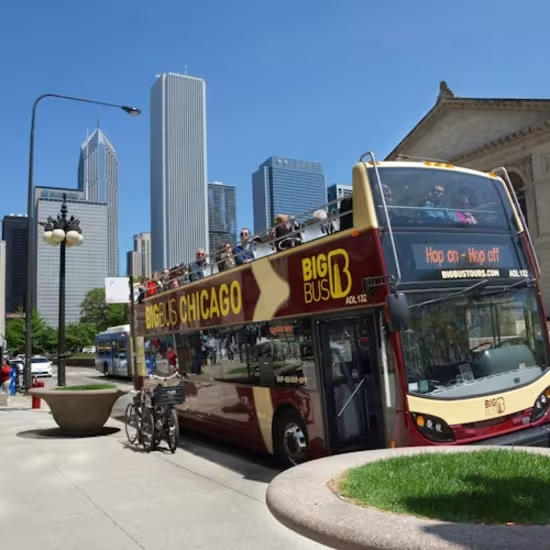
An esteemed aquatic institution showcasing a vast array of marine life, from colorful tropical fish to majestic marine mammals. It offers immersive exhibits and educational programs, providing a comprehensive glimpse into aquatic ecosystems. Located adjacent to The Field Museum, it is easily accessible on Chicago’s Museum Campus.
Adler Planetarium
America’s first planetarium, Adler Planetarium offers engaging astronomy exhibits, immersive sky shows, and interactive displays about space exploration and celestial phenomena. Situated next to The Field Museum, it forms part of the Museum Campus and is within a short walking distance.
Museum Campus
A scenic lakeside park connecting The Field Museum, Shedd Aquarium, and Adler Planetarium, offering picturesque views of Lake Michigan and the Chicago skyline. The Campus provides walking paths, green spaces, and picnic spots, ideal for visitors looking to enjoy outdoor activities between museum visits.
Grant Park
A large urban park in downtown Chicago renowned for its gardens, art installations, and festivals. It is a short distance from The Field Museum, offering visitors additional opportunities for leisure, outdoor concerts, and cultural events.
Northerly Island
An urban nature preserve on Lake Michigan featuring walking trails, birdwatching opportunities, and lakefront views. Located a brief distance east of The Field Museum, it is perfect for visitors seeking natural surroundings and recreational activities near the city center.
Museum of Science and Industry
One of the largest science museums in the world, housed in the historic Palace of Fine Arts from the 1893 World’s Columbian Exposition. While a bit farther from The Field Museum, around a 10-minute drive, it offers extensive hands-on exhibits and educational attractions suitable for all ages.
Accessibility at The Field Museum
- Access
- Physical Disabilities
- Hearing Impairments
- Visual Impairments
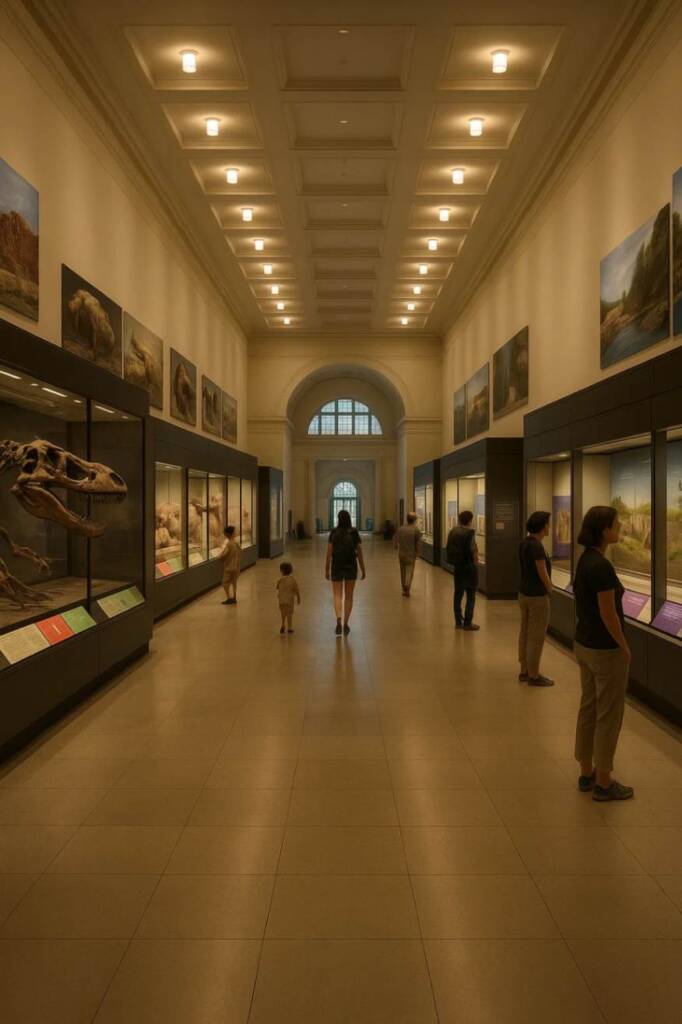
The Field Museum is committed to providing an inclusive and welcoming environment for all visitors. The venue features multiple accessibility accommodations to support individuals with mobility challenges, ensuring a comfortable and enjoyable experience.
Entry to the museum includes ramps and elevators that facilitate easy access throughout the building. Visitors using wheelchairs, scooters, or other mobility devices can navigate the museum’s spaces without difficulty, as these features connect all floors and exhibit areas seamlessly.
Accessible ticket counters are available to assist visitors requiring additional support during entry, ensuring a smooth ticket purchasing process. Moreover, accessible restrooms are conveniently located on every level, accommodating guests’ needs throughout their visit.
The museum’s overall design prioritizes ease of movement, with wide pathways, clear signage, and thoughtfully arranged exhibits that promote a barrier-free exploration of its vast collections. This thoughtful layout reflects The Field Museum’s dedication to providing a respectful and straightforward museum experience for individuals of all physical abilities.

The Field Museum is committed to providing an accessible and welcoming environment for all visitors, including those with physical disabilities. To accommodate guests who require mobility assistance, the museum offers wheelchairs free of charge. These are available on a first-come, first-served basis and can be requested at the main information desk upon arrival.
Throughout the museum, exhibit spaces, public areas, and restrooms are designed to be fully accessible to wheelchair users. The facility features smooth, wide pathways and ramps where necessary to ensure comfortable navigation across all galleries and display areas. Elevators are strategically located to provide convenient access between the museum’s multiple floors, maintaining barrier-free movement for visitors with mobility challenges.
In addition to physical access, the Field Museum provides accessible seating in all auditoriums, theaters, and similar event spaces to accommodate guests using wheelchairs or those requiring additional support. Staff members are trained to assist and ensure that visitors with physical disabilities have a safe and enjoyable experience during presentations and programs.
Overall, the Field Museum’s accessibility measures reflect its dedication to inclusivity, ensuring that every guest can fully engage with its educational and cultural offerings.

The Field Museum is dedicated to providing an inclusive and accessible experience for all visitors, including those with hearing impairments. To support guests with hearing challenges, the museum offers complimentary audio guides that feature T-coil compatible hearing loops, allowing for seamless use with compatible hearing aids. These assistive technologies ensure that visitors can clearly hear narrated content throughout the museum.
In addition, transcripts for audio exhibits and films are available upon request, enabling visitors to engage fully with the information presented in a written format. This resource allows guests to experience the museum’s educational content at their own pace and comfort.
For those joining guided tours, assistive listening devices are provided to guarantee that all participants can follow and enjoy the commentary without missing important details. These accommodations reflect The Field Museum’s ongoing commitment to accessibility and inclusivity, ensuring that every visitor can experience the depth and richness of natural history on offer.
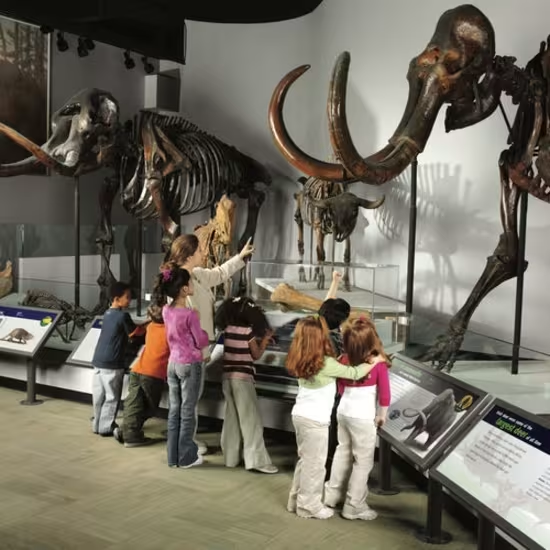
The Field Museum is deeply committed to creating an inclusive and welcoming environment for all visitors, including those with visual impairments. To support a rich and engaging experience, the museum offers a variety of accommodations tailored to meet the needs of visually impaired guests.
Tactile exhibits and braille guides are thoughtfully integrated into key displays, allowing visitors to explore important artifacts and specimens through touch. These resources provide valuable information and enable a more interactive connection to the museum’s collections.
Additionally, the museum’s audio guide system features detailed audio descriptions that bring exhibits to life through vivid narration. This service helps visually impaired guests gain a fuller understanding of the exhibits’ content and context as they tour the galleries.
Service animals are welcomed throughout the entire venue, in accordance with the museum’s accessibility policies. This ensures that visitors who rely on service animals can navigate and enjoy the museum comfortably and independently.
The Field Museum staff receive specialized training to assist visitors with visual impairments. Team members are readily available to provide guidance, answer questions, and offer support whenever needed, ensuring every guest has the opportunity to fully appreciate the museum’s offerings in an accessible manner.
Through these thoughtful accommodations and dedicated staff support, The Field Museum strives to make natural history accessible and engaging for all members of the community.
Highlights at The Field Museum
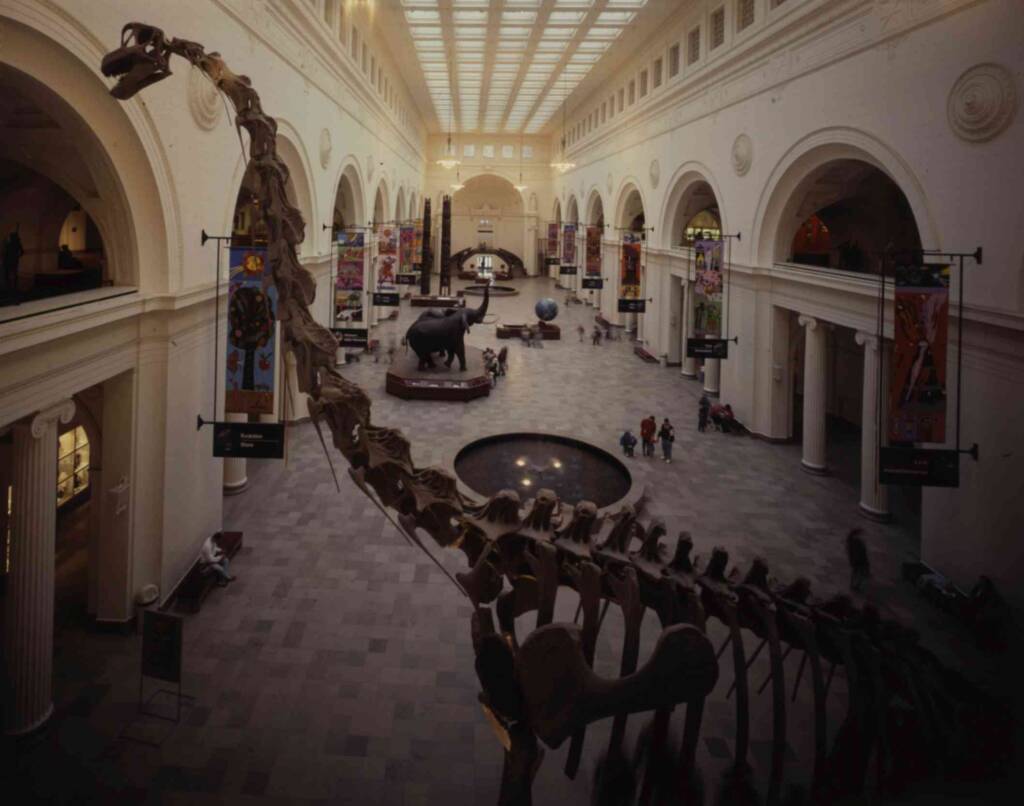
SUE the Tyrannosaurus rex
One of the most renowned specimens housed at The Field Museum is SUE, the largest and most complete T. rex fossil ever discovered. Unearthed in South Dakota and dating back approximately 67 million years, SUE measures over 40 feet in length and stands 13 feet tall at the hips. Visitors can admire this iconic skeleton, which offers a rare, detailed glimpse into prehistoric life. The specimen is presented with careful scientific consideration, including the removal of the original skull from the mounted display to facilitate ongoing research and preservation.
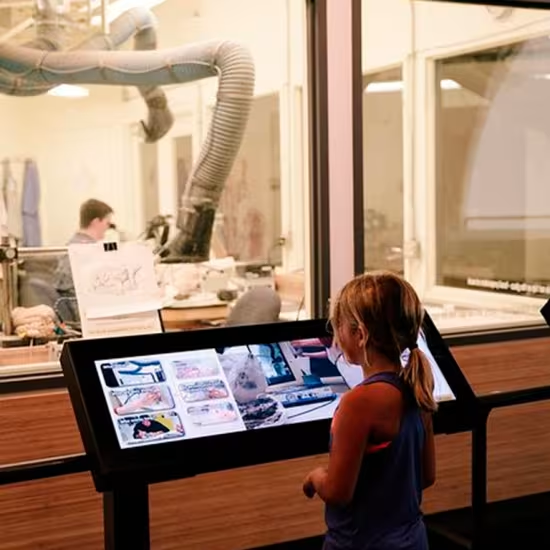
Evolving Planets Exhibition
Evolving Planet is one of the premier permanent exhibitions at The Field Museum, offering visitors a comprehensive journey through the history of life on Earth spanning over 4 billion years. This expansive gallery features an impressive collection of fossils and artifacts that illustrate the evolution of diverse life forms, from the earliest single-celled organisms to the dominant dinosaurs and early mammals.
This exhibition is accessible with general admission tickets, and visitors can enhance their experience by opting for guided tour tickets that provide expert insights and in-depth explanations of the evolutionary milestones on display. For international tourists, Evolving Planet offers a valuable and memorable exploration of Earth’s natural heritage, complementing the museum’s broader mission to connect all visitors with the natural world and the human story.

Inside Ancient Egypt Exhibition
One of the standout highlights at The Field Museum is the “Inside Ancient Egypt” exhibition. This immersive gallery provides an in-depth look into the fascinating world of ancient Egyptian civilization. Visitors can explore authentic artifacts including 23 human mummies and mummified animals, offering a unique perspective on ancient funerary customs and beliefs about the afterlife.
A key feature of this exhibit is the meticulously constructed replica of the mastaba tomb of Unas-Ankh, which allows guests to experience the architectural and cultural significance of Egyptian burial sites firsthand. The exhibition also includes detailed dioramas portraying the rituals involved in preparing for the afterlife, enriching understanding of ancient Egyptian spirituality and everyday life.
By visiting the “Inside Ancient Egypt” exhibition, guests gain valuable insights into one of the world’s oldest civilizations through a combination of archaeological artifacts and educational displays. This exhibit is an essential part of The Field Museum’s collection, aligning with its mission to connect all visitors to the natural world and the human story. Ticket holders may include this exhibition as part of their general admission or choose guided tour tickets for a more comprehensive experience.
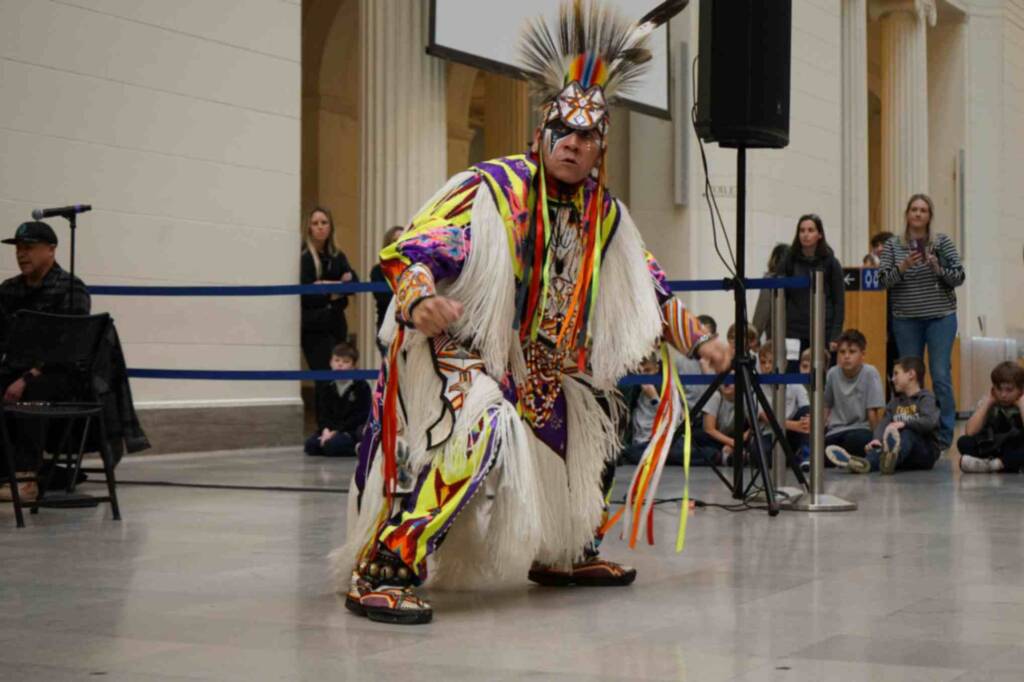
The Ancient Americas Exhibition
The Ancient Americas exhibition at The Field Museum offers an in-depth exploration of 13,000 years of human history and achievement across the Western Hemisphere. This permanent display is thoughtfully organized into six thematic sections, each highlighting the rich and diverse cultures of indigenous peoples who have shaped the Americas over millennia. Visitors can encounter artifacts that illuminate ancient societies’ innovations, traditions, and ways of life. Through curated exhibits featuring pottery, textiles, tools, and ceremonial objects, the Ancient Americas gallery provides a comprehensive understanding of the region’s cultural heritage. This exhibition is an essential component of the museum’s mission to connect all visitors to the human story, offering international tourists a meaningful insight into the profound contributions of Native American civilizations. Tickets to the Field Museum include access to this compelling exhibition, with options available for general admission as well as guided tours that enrich the visitor experience by providing expert commentary on the intricate histories presented.
10 Special Tips for Visiting The Field Museum
Plan Your Visit on Weekdays or Early Mornings
To enjoy a more peaceful experience, consider visiting The Field Museum on weekdays or shortly after opening at 9:00 AM. These times typically see fewer crowds, allowing you to explore the exhibits more comfortably.
Follow a Suggested Route for Efficiency
Begin your visit with the major permanent exhibitions such as Evolving Planet and Inside Ancient Egypt, then move to cultural halls and specialty exhibits. This itinerary helps to cover key highlights without backtracking, optimizing your time in the museum.
Be Mindful of Content for Young Visitors
Some exhibits, like those featuring mummies or predator animals, may require parental guidance. Families with children should plan accordingly and utilize family-friendly areas like PlayLab for age-appropriate engagement.
Utilize Audio Guides and Interactive Tools
The Field Museum offers audio guides and interactive exhibits that enrich understanding. Accessing these tools can provide deeper insights into displays like SUE the T. rex and cultural artifacts.
Allocate Between Two to Four Hours
Visitors typically spend 2 to 4 hours exploring The Field Museum. This duration allows for a comprehensive visit while avoiding fatigue, especially when balancing multiple exhibits and programs.
Reserve Tickets in Advance
Booking your general admission, special event, or guided tour tickets ahead of time ensures entry on your preferred date, especially for high-demand offerings like the Dozin’ with the Dinos sleepover packages.
Expect Security Screening at Entry
All visitors undergo standard security checks upon entrance to ensure a safe environment for everyone. Arriving slightly earlier than your ticket time helps accommodate this process smoothly.
Dress Appropriately for Outdoor Access
While most exhibitions are indoors, some areas like the Museum Campus outdoors require comfortable walking shoes and weather-appropriate clothing to enjoy nearby attractions and scenic views along Lake Michigan.
Respect Museum Conduct Guidelines
Maintain respectful behavior by observing the museum’s rules, such as speaking quietly, avoiding food and drink in exhibition spaces, and following instructions from staff and signage to preserve the collections.
Observe Photography Policies
Photography without flash is generally permitted in most galleries, but some special exhibitions or artifact displays may have restrictions. Check signage on-site to understand where photography is allowed to respect conservation efforts.


